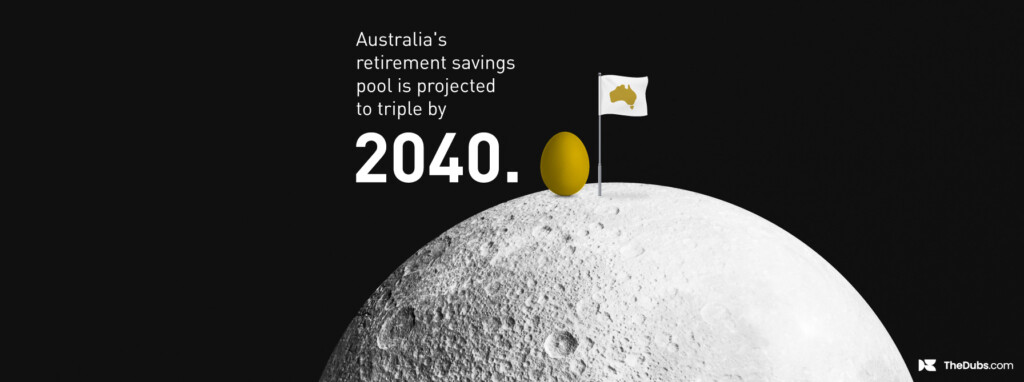Facebook is making serious changes in a bid to reclaim younger audiences, potentially affecting finance brands social amplification strategy on the platform. Over the past five years Facebook has experienced a significant drop in popularity with younger audiences forcing them to make significant changes in order to remain competitive within the social media sphere. Last week, Facebook relaunched as Meta, in a bid to try and once again dominate the social media landscape. In conjunction, Facebook has also been making changes across the app to better protect and also actively engage with younger users. So, what does this mean for finance brands and how can they continue to use Facebook to acquire new customers?
While the perception of Facebook is that it’s a place for younger audiences and not suitable for serious content like LinkedIn, research is showcasing this may not be quite accurate. Instead, Facebook’s major users are in their 30’s to 40’s and the fastest growing demographic are seniors aged 65 and over. This means your facebook content strategy should reflect who truly utilises the platform which are those over 30.
Facebook relaunches as Meta
In a bold attempt to re-dominate the social media landscape Facebook has relaunched as Meta with the aim of evolving how we individuals connect. While Facebook will remain being called Facebook, Meta now encompasses all of Facebook’s brands and businesses. The ‘metaverse’ as Facebook’s Founder Mark Zuckerberg has dubbed it, has a vision of integrating the real and digital world together through technologies like visual reality (VR) and augmented reality (AR).
After the pandemic it’s not difficult to see how jobs, friendships and families may move to live in the digital world more wholly. The niche technologies like VR and AR may come to be more widespread, encompassing peoples work and social lives. In this way Meta is hoping to be the leader in removing the barriers between reality and the digital world.
To see this already in action you only need to look at the recent launch of Ray-Ban Stories. You can now buy Ray-Ban sunglasses that have an in-built camera enabling you to capture photos and videos as you walk and then you can share them across Facebook and other social media apps.
Who is actually using Facebook
With the first Facebook users now entering their 30’s and 40’s, Facebook is faced with an aging population. In fact, in the UK and US around 3 million users under the age of 25 will quit using the app.
This means Facebook currently has a much older audience actively using its features. In Australia users in the 13-17 year age gap had the lowest share of active usage and the highest demographic of users were between the ages of 26 and 34. These figures are much the same in the UK and US, with the 26-34 year age group being the largest demographic base. In fact, a study conducted by Pew Research in 2019 found only 51% of US teens between 13 and 17 said they used Facebook, which is a sharp decline from their 2015 study where 71% said they did. While this may be bad news for Facebook, it’s important information for your finance brand to understand.
Recognising that Facebook has a higher age group actively using the app, compared to Instagram and Snapchat for example, means your content strategy should reflect this. Creating content that’s targeted towards an older age group, over the late teens and early twenties age group, will see you generate more meaningful leads and create stronger customer relationships.
“ in the UK and US around 3 million users under the age of 25 will quit using the app this year. ”
However, you should never assume that the primary audience on a platform won’t change, particularly as Facebook is actively working to increase their younger users. Your finance brand should plan content accordingly as Facebook’s demographics change to stay ahead of the competition and gain access to new market segments before other finance brands can catch up.
What is Facebook changing
Other than Facebook’s relaunch as Meta, over the past few years they have been making changes to their app to both protect and encourage participation in younger users. Their current three main priorities are:
- Creators (individuals that contribute content to Facebook in the form of videos, written content, and photos – they often amass followings that then enables them to earn money)
- Commerce
- Building the next computing platform
This indicates two areas for finance brands to refocus their marketing strategies towards; creators and commerce. Understanding how to utilise creators and the commerce platform to leverage and capture the attention of Facebook’s 3.6 billion users is critical for your finance brand to gain a competitive edge. Identifying and creating a marketing strategy that utilises creators in making innovative and creative campaigns that live on Facebook Stories, Facebook’s newsfeed and soon Facebook Reels, will be one way to stand out from the crowd.
To address the aging population, Facebook has created a multi-year plan to target a younger demographic. Some of the key areas Facebook will be targeting include:
- Mental health products
- Updating friends networks
- Altering the news feed algorithm to showcase content from pages users don’t follow
- Reinforcing Facebook Groups through introducing Groups+
- Facebook Reels
For finance brands not all of these changes will be relevant. The ones that are include the alterations to news feed algorithms, the changes to Facebook Groups and the introduction of Facebook Reels.
What finance brands need to know
So, how should this inform your finance brand’s marketing strategy? At the core of it, currently your finance brand’s social amplification strategy on Facebook should be geared towards the current older demographic, meaning you can share slightly more serious and sophisticated products and services. However, you should be prepared to alter your content if Facebook’s plan to gain a younger demographic is successful. Remaining agile and adaptable on Facebook will be key to staying ahead of the competition and standing out from the crowd.
In terms of changes, Facebook Reels will work similar to Instagram Reels, as it attempts to compete against the mammoth social media app: TikTok. Creating short, fun and educational content in this format will be a great way to capture the attention of interested users. Working with creators will also benefit your finance brand with Facebook looking to focus on improving their influencer user-base more.
With Facebook altering their news feed algorithm once again, this will give your finance brand a greater opportunity to connect with users. They will be making efforts to show content from businesses and pages users don’t follow to create greater engagement and ensure users are never bored. This is a prime opportunity for your finance brand to be discovered by active users on a daily basis helping to generate leads and build brand awareness. Your content should therefore be engaging and capture the attention of users quickly. Ensuring you recognise your target audience and build content accordingly, Facebook can become a great area for your brand to gain interest from new market segments.
Finally, while Groups+ hasn’t yet been launched, it aims to challenge LinkedIn by enabling the easier creation of tight knit groups, allowing people to host their resumes, and advertise jobs. While Facebook Groups has always been an area for finance brands to benefit from if they have the resources, Groups+ has the opportunity to heighten the rewards. Helping to build authentic relationships with consumers as well as increase trust and loyalty, Groups+ is looking to build a younger user base on the platform through forming stronger connections with users and brands.
As Facebook attempts to grab the attention of young people, this marks a prime opportunity for agile finance brands to stay ahead and gain a competitive edge. By exploiting Facebook’s new features and creating targeted content your finance brand can generate leads, build authentic connections with consumers and heighten customers trust and brand awareness.









